Occupational Safety Training for Operating a High-Pressure Water Jet Machine
99,000 ₫
Note: The price above is calculated per person and may fluctuate depending on the number of participants in the course and market conditions. For more accurate pricing support, please refer to the price list or contact our consulting staff directly.
Occupational safety is an important issue when operating a high-pressure water spray machine and must be addressed promptly to ensure the health and safety of workers and enhance the reputation of businesses here. The Occupational Safety Training course is one of the effective solutions to raise awareness of how to prevent workplace accidents for workers operating a high-pressure water spray machine.
Table of Contents
Toggle1. Overview of High-Pressure Water Sprayers
a. What is a High-Pressure Water Sprayer?
A high-pressure water sprayer is a device used to generate a stream of water at high pressure to clean surfaces or remove dirt, grease, deposits, and other residues. This equipment is widely used in various applications, including car cleaning, construction sites, agricultural machinery, the food industry, and many other fields.
A high-pressure water sprayer works by using a pump to force water through a nozzle or pipe at high pressure. The high-pressure water stream impacts the surface to be cleaned, effectively removing dirt, grease, algae, and other stubborn residues that regular water cannot remove. High-pressure water sprayers are often used with cleaning solutions to enhance cleaning efficiency.
Using a high-pressure water sprayer can save time and effort compared to manual cleaning and is preferred in tasks requiring high cleaning performance and results.

b. Operating principle of high-pressure water sprayers
The working principle of a high-pressure water sprayer is based on generating high water pressure and using it to create a strong water stream, which can be adjusted to clean surfaces or remove dirt, grease, and other residues. Here’s a detailed description of how it works:
- Pump: High-pressure water sprayers are equipped with a specialized pump, typically a piston pump or screw pump, which generates high water pressure. Water is drawn from a supply source, usually a tank or a clean water source.
- Pressure: The pump creates pressure by forcing water through a system of pistons or rotors, depending on the pump type. This pressure is significantly higher than the normal water supply pressure.
- Nozzle system: High-pressure water is then directed through a specialized nozzle or piping system to create a strong water stream. As water passes through the nozzle under high pressure, it is intensified, forming a powerful flow.
- Pressure adjustment: High-pressure water sprayers typically have switches or valves to adjust water pressure, allowing users to select higher pressure for heavy-duty cleaning or lower pressure for delicate tasks.
- Optional cleaning solutions: Some high-pressure water sprayers support adding cleaning solutions to the water stream, improving cleaning efficiency and helping remove stubborn residues.

c. Industries using high-pressure water sprayers
High-pressure water sprayers are used in many industries due to their powerful cleaning capability and ability to remove stubborn residues. Key industries include:
- Construction: Used to clean construction surfaces such as walls, floors, roofs, and concrete columns, removing dust, algae, and grime.
- Agriculture: Used to clean agricultural machinery like plows, harvesters, and irrigation systems, as well as livestock facilities and equipment.
- Food industry: Cleans food processing equipment, worktables, kitchens, and packaging machinery, removing grease and contaminants from surfaces in contact with food.
- Automotive: Cleans cars, removing grease, dirt, and other residues, and can also clean oil pipes and hardware components.
- Chemical industry: Cleans equipment and systems in chemical production and storage facilities.
- Oil & gas industry: Cleans equipment such as drilling rigs, pipelines, and storage tanks.
- Cleaning & maintenance: Used for cleaning floors, gardens, pools, and other surfaces.
2. Overview of the Labor Safety Training Course for Operating High-Pressure Water Washers
a. What is Labor Safety Training?
- Labor safety training for operating high-pressure water washers consists of sessions designed to raise awareness on accident prevention for workers. Accordingly, those who work directly with high-pressure water washers belong to Group 3.
- The labor safety training course helps workers recognize hazards and avoid risks, reducing the likelihood of accidents while on the job.
REGISTER FOR LABOR SAFETY TRAINING SERVICE
b. Training Duration
Initial Labor Safety Training
- The total training duration must be at least 24 hours, including examination time.
- 8 hours of theory on labor safety laws, policies, and regulations
- 8 hours of theory on basic occupational safety and hygiene knowledge
- 4 hours of theory on specialized training content
- 2 hours of practical training on specialized content
- 2 hours for the final theoretical exam
The safety training center schedules training sessions according to workers’ availability. Typically, there are 6 sessions over 3 days, provided the company can allocate continuous time for learning.
Periodic Labor Safety Training
- Before the labor safety card expires, workers who wish to renew it must complete a periodic labor safety training course, with periodic training time being at least 50% of the initial training duration.
Explanation: The total duration of periodic labor safety training is at least 12 hours, including examination time. After completing the course and passing the test, workers will have their labor safety card renewed.
c. Course Content
| No. | TRAINING CONTENT | TRAINING DURATION (HOURS) | |||
| Total | Including | ||||
| Theory | Practice | Exam | |||
| I | Labor safety laws and policy system | 8 | 8 | 0 | 0 |
| 1 | Overview of legal documents on occupational safety and hygiene. | 6 | 6 | ||
| 2 | Standards and technical regulations for occupational safety and hygiene. | 1 | 1 | ||
| 3 | Specific regulations by state management agencies on occupational safety and hygiene for new, expanded, or renovated facilities; production, usage, storage, inspection of machines, equipment, materials, and substances with strict safety and hygiene requirements. | 1 | 1 | ||
| II | Basic occupational safety and hygiene knowledge | 8 | 8 | 0 | 0 |
| 1 | Basic knowledge of workplace hazards and harmful factors. | 4 | 4 | ||
| 2 | Methods to improve working conditions. | 1 | 1 | ||
| 3 | Safety culture in production and business. | 1 | 1 | ||
| 4 | Rights and obligations of employers and employees; policies on occupational safety and hygiene; functions of the safety network. | 1 | 1 | ||
| 5 | Safety regulations, signage, use of safety equipment and personal protective gear; first aid and occupational disease prevention skills. | 1 | 1 | ||
| III | Specialized training content | 6 | 4 | 2 | 0 |
| Comprehensive knowledge of machines, equipment, and hazardous substances; risk assessment and management; safe working procedures with machines, equipment, and hazardous substances. | 6 | 4 | 2 | ||
| IV | Final safety training assessment | 2 | 2 | 0 | 0 |
| Total | 24 | 22 | 2 | ||
See more training content of the 6 groups
d. Labor Safety Card
After completing the labor safety training course and passing the test, workers will be issued a labor safety card (commonly called labor safety certificate for Group 3).
The Group 3 safety card displays information such as name, date of birth, job, and working environment, along with training duration, red seal, and signature confirming course completion.
According to regulations stated in Clause 2 of Article 24 of Decree 44/2016/ND-CP, there are two cases:
- If there is an employment contract between employer and employee, the employer must sign, stamp, and validate the Group 3 safety card after the worker completes the course and passes the test.
- If the worker is freelance or seasonal without a labor contract, the training unit must sign, stamp, and validate the safety card after the worker completes the course and passes the test.

3. Hazards When Operating High-Pressure Water Washers
Operating a high-pressure water washer can pose risks to both users and the environment if safety rules and manufacturer guidelines are not followed. Here are some common hazards associated with using high-pressure water washers:
- High-pressure danger: The extremely high water pressure generated by the washer can cause injury if not handled carefully. Users must always maintain a safe distance and never place hands or any body part in the water stream to avoid injury.
- Risk of strong impact: The powerful water jet can create strong forces that may affect the user or nearby objects. This can cause injury or damage the surfaces being cleaned.
- Improper use: Using the high-pressure washer incorrectly can damage the machine or create risks for the user. Users should ensure they have read and understood the machine’s instructions before starting work.
- Electrical hazards: If not properly insulated and protected, using the washer near electrical sources may result in electric shock or fire hazards.
- Cleaning solutions: Using strong cleaning chemicals can harm health if not used properly or if manufacturer safety guidelines are not followed.
- Eye and ear protection: High water pressure and noise from the washer can damage eyes and ears. Users should wear safety goggles and ear protection to avoid these risks.
- Environmental impact: Using a high-pressure washer can cause environmental pollution if wastewater and debris from cleaning are not properly managed.

4. Measures to Prevent Workplace Accidents When Operating High-Pressure Water Washers
To prevent workplace accidents while operating high-pressure water washers, the following safety measures should be applied:
- Training and guidance: Ensure users are fully trained on how to operate the washer and related safety measures. They need to understand potential hazards, how to adjust pressure, use cleaning solutions (if applicable), and maintain the machine.
- Use protective gear: Users must wear safety goggles to protect eyes from any debris during cleaning. Ear protection should also be used to reduce noise exposure.
- Machine inspection before use: Users should check the washer before operation to ensure it is in safe working condition. All parts must function correctly and be free of damage.
- High-pressure safety: Always maintain a safe distance and never place any body part in the water stream. Ensure that both users and nearby personnel are trained to avoid direct contact with high-pressure water.
- Electrical isolation: Ensure the washer and its electrical components are insulated and protected from water to prevent electric shock.
- Regular maintenance: Perform routine maintenance as instructed by the manufacturer to ensure the machine operates safely and efficiently.
- Wastewater and chemical management: Ensure wastewater and chemicals used during cleaning are safely handled and comply with environmental regulations.
- Compliance with regulations and safety instructions: Follow all government and manufacturer safety guidelines. Report any incidents immediately and take necessary measures to minimize risks and protect health.
- Periodic inspection of high-pressure washers to detect early safety issues such as wear, damage, or mechanical failure, reducing the risk of workplace accidents.
5. Benefits of Occupational Safety Training
An Toàn Nam Việt provides businesses with the following benefits after completing occupational safety training courses as regulated under Decree 44/2016/ND-CP on Occupational Safety and Hygiene:
- Employees can identify potential hazards and take preventive measures to avoid workplace accidents.
- Businesses can establish risk prevention measures within production, operation, and maintenance processes.
- Reduce costs associated with safety risks in the workplace.
- Uninterrupted production increases labor productivity and product quality.
- Compliance with labor safety regulations reduces legal risks.
- Enhances credibility and professionalism, elevating the business’s brand.
Training courses at Nam Việt provide solutions to prevent external hazards, helping individuals avoid injuries or even fatalities.
REGISTER FOR OCCUPATIONAL SAFETY TRAINING
6. Customer Feedback After Completing Training
An Toàn Nam Việt has many years of experience accompanying businesses across Vietnam, particularly in the southern provinces. This responsibility is extremely valuable, and therefore Nam Việt focuses on making occupational safety training increasingly professional. Our growth is fueled by both positive feedback and constructive input from our clients. Below are testimonials from the partners we have served.
See more customer interviews after using the service of An Toàn Nam Việt
7. Labor Safety Training Capability of An Toàn Nam Việt
An Toàn Nam Việt is a reputable and high-quality labor safety training center in Vietnam. Our labor safety training sessions are conducted continuously at manufacturing workshops, factories, and construction sites across the country (all 63 provinces of Vietnam).
REGISTER FOR LABOR SAFETY TRAINING SERVICE
Labor Safety Training License
- An Toàn Nam Việt has been inspected and certified by the Department of Safety under the Ministry of Labor, War Invalids and Social Affairs as meeting the conditions for conducting labor safety and hygiene training. This further strengthens our capability in providing labor safety training.

Materials and Lectures
- Before labor safety training materials are used in training courses, they are carefully reviewed and approved to ensure the content is accurate and effective in practice.
- The teaching methods of our instructors are standardized according to An Toàn Nam Việt teaching criteria, based on research and experience from experts in occupational safety and hygiene training to maximize learning effectiveness for trainees.
Facilities
- Controlling the classroom environment impacts training efficiency and knowledge absorption.
- Our training facilities provide spacious classrooms that meet standards for area, lighting, and training equipment, among others.
8. Nationwide Reputable Safety Training Center
At An Toàn Nam Việt, we prioritize the professionalism and dedication in labor safety training. For us, equipping workers with knowledge to protect themselves contributes to building a safer workforce and supporting national development.
To ensure effective training, we meticulously prepare every detail, from tools and teaching equipment to materials, audio, and lighting.
Our labor safety instructors are experts with years of experience. Many have conducted research identifying hazards across various industries and the best practices to mitigate them.
Lectures are based on practical experience and delivered in an engaging and easy-to-understand way for trainees. This approach ensures learners are comfortable and absorb knowledge efficiently. Training content strictly adheres to Decree 44/2016/ND-CP.
As a result, trainees learn multiple hazard prevention methods and how to protect themselves, applying this knowledge appropriately in real work scenarios.
Our safety training center proudly provides professional and reliable labor safety training services with the following advantages:
- Competitive training costs without compromising quality.
- Flexible training schedules to suit company production requirements.
- Fast and compliant procedures for issuing labor safety training certificates.
- Experienced and professional instructors.
- Classrooms are optimized to enhance teaching efficiency and learning outcomes.
- Courses are tailored to occupational safety needs in enterprises.
- An Toàn Nam Việt works diligently and professionally to provide precise and rapid support to clients.

9. Additional References for Labor Safety Training Materials
- Labor Safety Training Materials Set
- Labor Safety Materials for Operating High-Pressure Water Washers
- Labor Safety Training Test Set
- Multiple-Choice Safety Test for Operating High-Pressure Water Washers
- Safety Training Slides for Operating High-Pressure Water Washers
1 review for Occupational Safety Training for Operating a High-Pressure Water Jet Machine
No comments yet

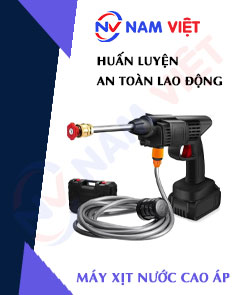





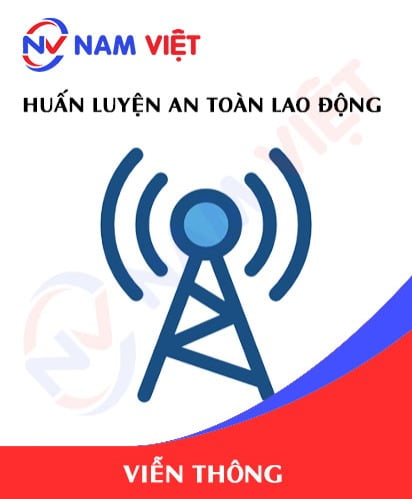
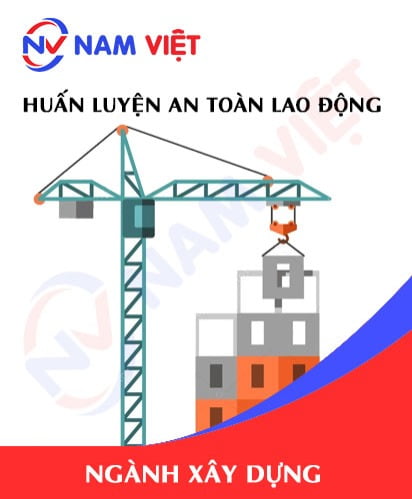
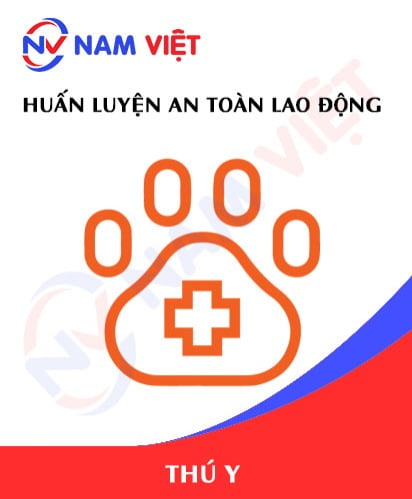


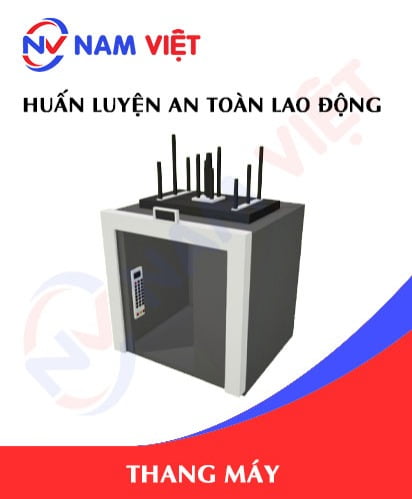


phanminhhang341
Good labor safety unit